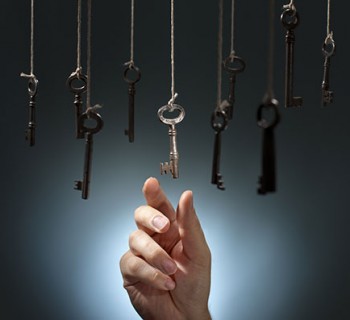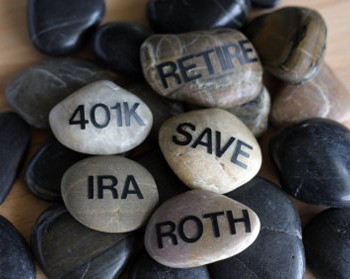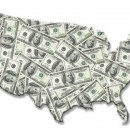 Purchases that bring excitement to your life are often detrimental to your wallet. New automobiles, boats, planes, RVs and other similar assets are well known for being depreciating assets – often losing a huge amount of their value as soon as you “drive off the lot”. While it would be financially ideal to purchase only appreciating assets (investments that may increase in value over time), depreciating assets can bring a great deal of enjoyment to you and your family and frankly, some (in the case of automobiles) are a necessity.
Purchases that bring excitement to your life are often detrimental to your wallet. New automobiles, boats, planes, RVs and other similar assets are well known for being depreciating assets – often losing a huge amount of their value as soon as you “drive off the lot”. While it would be financially ideal to purchase only appreciating assets (investments that may increase in value over time), depreciating assets can bring a great deal of enjoyment to you and your family and frankly, some (in the case of automobiles) are a necessity.
So what impacts depreciation most? Generally, depreciation is based upon a few important factors. The asset’s projected useful life (how long it will last), projected brand reliability, supply/demand factors and sensitivity to economic changes can all impact how quickly an asset will depreciate.
So what assets tend to depreciate the most?
Automobiles
It is well known that new automobiles experience depreciation immediately after purchase. In fact, according to automobile research site www.Edmonds.com, on average, a new car loses 11 percent of its value the moment you leave the lot. Depreciation generally averages 15 percent to 25 percent per year for the first five years with an average residual value after five years of 37 percent. That means that the new car you just purchased is only worth 37 percent of its original value after 5 years of ownership. Does this mean that you shouldn’t purchase a new car? Not necessarily. Edmonds notes, “Depreciation doesn't mean you shouldn't buy a new car. In fact, if your plan is to drive the wheels off your car, then depreciation has no effect on your purchase. But if you do intend to trade it in, you need to be smart about the resale value.” Keep in mind, depreciation can vary greatly by brand and type. For example, mid-size trucks and SUVs tend to hold their value much better than electric, luxury and subcompact cars. Be sure to review the projected depreciation of any automobile prior to purchase.
Boats
It is said that the two happiest days of a boat owners life are the day they buy a boat and the day they sell it. While a day on the water can certainly be enjoyable, it can also be an expensive proposition. This is because boats are also very well known for being big depreciators. In fact, first year depreciation rates on new boats can be higher than automobiles, making your purchase a potentially expensive endeavor. Interestingly, the depreciation rate on boats tends to level out and stabilize for a period of time prior to declining further later in their life. Brand and quality also play a major role in determining depreciation with the highest quality boats holding their value much better than those of lower quality.
RVs
RVs and campers are yet another purchase known for rapid depreciation. In fact, according to www.camperreport.com, the average new RV will depreciate by a whopping 21 percent as soon as you leave the dealer. However, much like boats, RVs tend to stabilize in value after the first few years before making another major drop in value later. www.Camperreport.com notes that the average camper loses around 36 percent of its value after 5 years.
Strategies to minimize the financial impact
If you determine that purchasing a depreciating asset will be part of your plans, the question becomes – how can you limit the financial impact of these purchases on your balance sheet? First, do your homework. Consider reviewing the estimated deprecation of your planned purchase. This can be accomplished by utilizing pricing sites like www.edumunds.com, www.kbb.com and www.nadaguides.com to see how the estimated values change from year to year. Next, consider purchasing higher quality brands that tend to depreciate less. Simply purchasing the right make and model can greatly reduce your projected depreciation.
It may also be beneficial to consider being a “contrarian buyer”. In other words, purchasing during times when the majority of consumers are not. For example, consider buying your boat during the winter or during economic weakness when demand is lower rather than at the start of the summer when demand is highest. Higher demand usually equals higher cost and getting a good deal can help reduce the overall cost of ownership.
Finally, consider passing up on buying depreciating assets when they are new. From brand new automobiles to watercraft, buying used and letting someone else take the first-year depreciation hit may result in significant savings over time.
Protect yourself from going upside down
Borrowing money to finance the purchase of assets that tend to depreciate can be risky. This is because there is a pretty good chance (depending on how much you put down) that you could actually owe more than what the asset is valued at some point during your time of ownership. For example, lets assume someone purchases a $200,000 boat and makes a 25 percent down payment. Based upon estimated payments toward principal, there is a chance the boat is worth less than what might be owed during the first few years. As a result, take special care and consider various forms of gap insurance to help reduce your exposure to risk.
While purchasing depreciating assets may be unavoidable, having clarity on the true cost of deprecation and buying at the optimal time during the assets useful life can help minimize some of the costs. Since everyone’s situation is unique, consider speaking to your financial adviser to determine the most appropriate strategies for you.
Kurt J. Rossi, MBA, CFP®, CRPC®, AIF® is a CERTIFIED FINANCIAL PLANNERtm Practitioner & Wealth Advisor. He can be reached for questions at 732-280-7550, kurt.rossi@Independentwm.com, www.bringyourfinancestolife.com & www.Independentwm.com. LPL Financial Member FINRA/SIPC.








